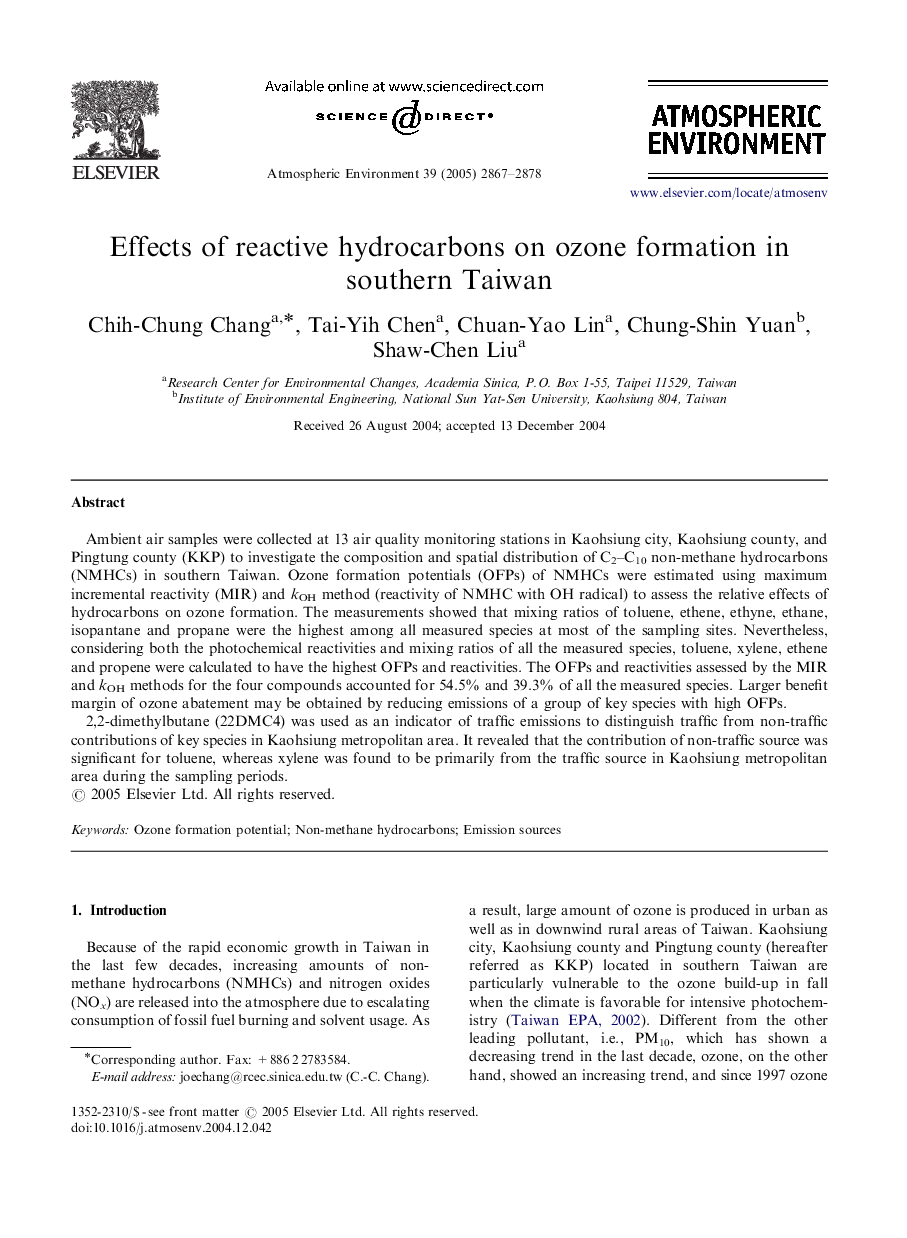| Article ID | Journal | Published Year | Pages | File Type |
|---|---|---|---|---|
| 4445264 | Atmospheric Environment | 2005 | 12 Pages |
Ambient air samples were collected at 13 air quality monitoring stations in Kaohsiung city, Kaohsiung county, and Pingtung county (KKP) to investigate the composition and spatial distribution of C2–C10 non-methane hydrocarbons (NMHCs) in southern Taiwan. Ozone formation potentials (OFPs) of NMHCs were estimated using maximum incremental reactivity (MIR) and kOH method (reactivity of NMHC with OH radical) to assess the relative effects of hydrocarbons on ozone formation. The measurements showed that mixing ratios of toluene, ethene, ethyne, ethane, isopantane and propane were the highest among all measured species at most of the sampling sites. Nevertheless, considering both the photochemical reactivities and mixing ratios of all the measured species, toluene, xylene, ethene and propene were calculated to have the highest OFPs and reactivities. The OFPs and reactivities assessed by the MIR and kOH methods for the four compounds accounted for 54.5% and 39.3% of all the measured species. Larger benefit margin of ozone abatement may be obtained by reducing emissions of a group of key species with high OFPs.2,2-dimethylbutane (22DMC4) was used as an indicator of traffic emissions to distinguish traffic from non-traffic contributions of key species in Kaohsiung metropolitan area. It revealed that the contribution of non-traffic source was significant for toluene, whereas xylene was found to be primarily from the traffic source in Kaohsiung metropolitan area during the sampling periods.
